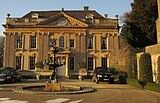Jeremy Joseph Fry was a British inventor, engineer, entrepreneur, adventurer and arts patron.
John Pinch was an architect working mainly in the city of Bath, England. He was surveyor to the Pulteney and Darlington estate and responsible for many of the later Georgian buildings in Bath, especially in Bathwick.
George Phillips Manners was a British architect, who was Bath City Architect from 1823 to 1862.
Charles Harcourt Masters was an English surveyor and architect in Bath.

Bear Flat is a neighbourhood within the city of Bath, Somerset, England, to the south of the city centre and to the west of Beechen Cliff. It forms the southern part of the Widcombe and Lyncombe electoral ward. The Wellsway road (A367) to Shepton Mallet, runs through Bear Flat, forming part of the ancient British Roman Fosse Way. This was originally the main pilgrimage route from Bath and its abbey, to the nearby ecclesiastical centres of Wells and Glastonbury.

St Thomas à Becket Church is a parish church of Widcombe in Bath, Somerset southwest England, and is one of a number of churches named after Thomas Becket. It is a Grade II* listed building.
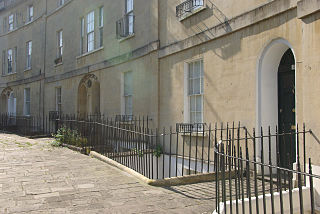
Widcombe is a district of Bath, England, immediately south-east of the city centre, across the River Avon.

Lieutenant-General Sir Love Parry Jones-Parry KH was a British Army officer, politician and later a High Sheriff. He was the son of Thomas Jones, and after his father acquired an estate at Madryn Castle from his cousin Margaret Parry in 1807 took Parry as an additional surname.

Bath and North East Somerset is a unitary authority created on 1 April 1996, following the abolition of the County of Avon, which had existed since 1974. Part of the ceremonial county of Somerset, Bath and North East Somerset occupies an area of 220 square miles (570 km2), two-thirds of which is green belt. It stretches from the outskirts of Bristol, south into the Mendip Hills and east to the southern Cotswold Hills and Wiltshire border. The city of Bath is the principal settlement in the district, but BANES also covers Keynsham, Midsomer Norton, Radstock and the Chew Valley. The area has a population of 170,000, about half of whom live in Bath, making it 12 times more densely populated than the rest of the area.
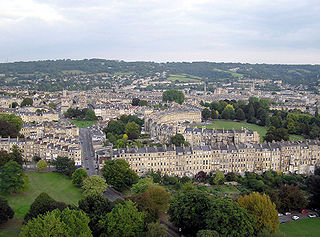
The buildings and architecture of Bath, a city in Somerset in the south west of England, reveal significant examples of the architecture of England, from the Roman Baths, to the present day. The city became a World Heritage Site in 1987, largely because of its architectural history and the way in which the city landscape draws together public and private buildings and spaces. The many examples of Palladian architecture are purposefully integrated with the urban spaces to provide "picturesque aestheticism". In 2021, the city was added to a second World Heritage Site, a group of historic spa towns across Europe known as the "Great Spas of Europe". Bath is the only entire city in Britain to achieve World Heritage status, and is a popular tourist destination.
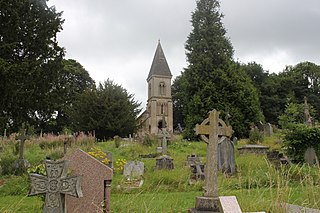
The Anglican Bath Abbey Cemetery, officially dedicated as the Cemetery of St Peter and St Paul, was laid out by noted cemetery designer and landscape architect John Claudius Loudon (1783–1843) between 1843 and 1844 on a picturesque hillside site overlooking Bath, Somerset, England.
John Pinch (1796–1849) was an architect, working mainly in the city of Bath, England, and surveyor to the Pulteney and Darlington estate. He was the son of John Pinch the elder, also an architect and surveyor to the estate.

Lyncombe is a district and electoral ward in Bath, Somerset, and a former parish in the Diocese of Bath and Wells. In the mid-19th century the parish was formed when the parish of Widcombe and Lyncombe was split in two, but it was abolished in the late 1960s. The village of Lyncombe existed since at least the Saxon period prior to becoming part of the City of Bath.
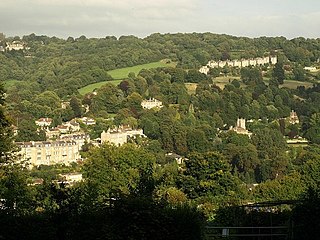
Crowe Hall is a Georgian house in Widcombe, Bath, Somerset, England. It is a Grade II listed building, and the gardens are on the Register of Historic Parks and Gardens of special historic interest in England.
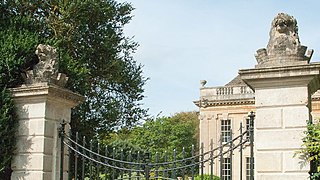
Philip Bennet (1703–1761), of Widcombe Manor, Bath, South Brewham and Maperton in Somerset, was a member of an ancient English Landed Family called Bennet. The Bennet family originated around the Norton Bavant area of Wiltshire with links to Cambridgeshire and can be traced back to Robert Bennet who was Keeper of the King's Seal.

The Church of St. Thomas à Becket is the Church of England parish church of Box, Wiltshire, in south-west England. It is one of a number of churches named after Thomas Becket following his martyrdom. The church has 12th-century origins and was substantially remodelled in the 14th, 15th, 18th and 19th centuries. It is a Grade I listed building.

Madryn Castle was a Welsh Gothic castle located south of the Llŷn Peninsula and north of Carn Fadryn in Buan, in the county of Gwynedd. It was owned by the same family for about 200 years until the death of Deputy Lieutenant William Corbet Yale in 1909.
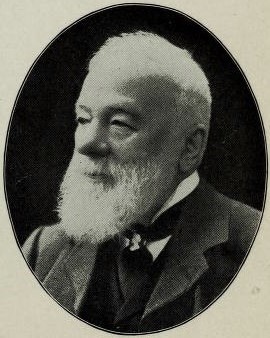
William Corbet Yale-Jones-Parry was a barrister-at-law, magistrate and Justice of the Peace from Denbighshire, Wales. He graduated from Oxford and served as Deputy Lieutenant under Lord Lieutenant William Cornwallis-West, a family member of Prince Hans Heinrich XV von Hochberg. His family seats were at Plas-yn-Yale, Madryn Castle and Widcombe Manor House in the city of Bath, England.
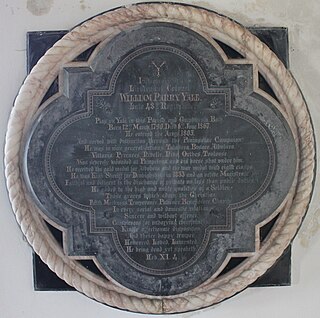
Lieutenant Colonel William Parry Yale was a military officer, magistrate and High Sheriff of Denbighshire. He became Justice of the Peace and a veteran of the Peninsular War during the Napoleonic Wars, serving under the Duke of Wellington. He was also severely wounded at the Siege of Pamplona, and was awarded the Peninsular Gold Medal after his campaign.


